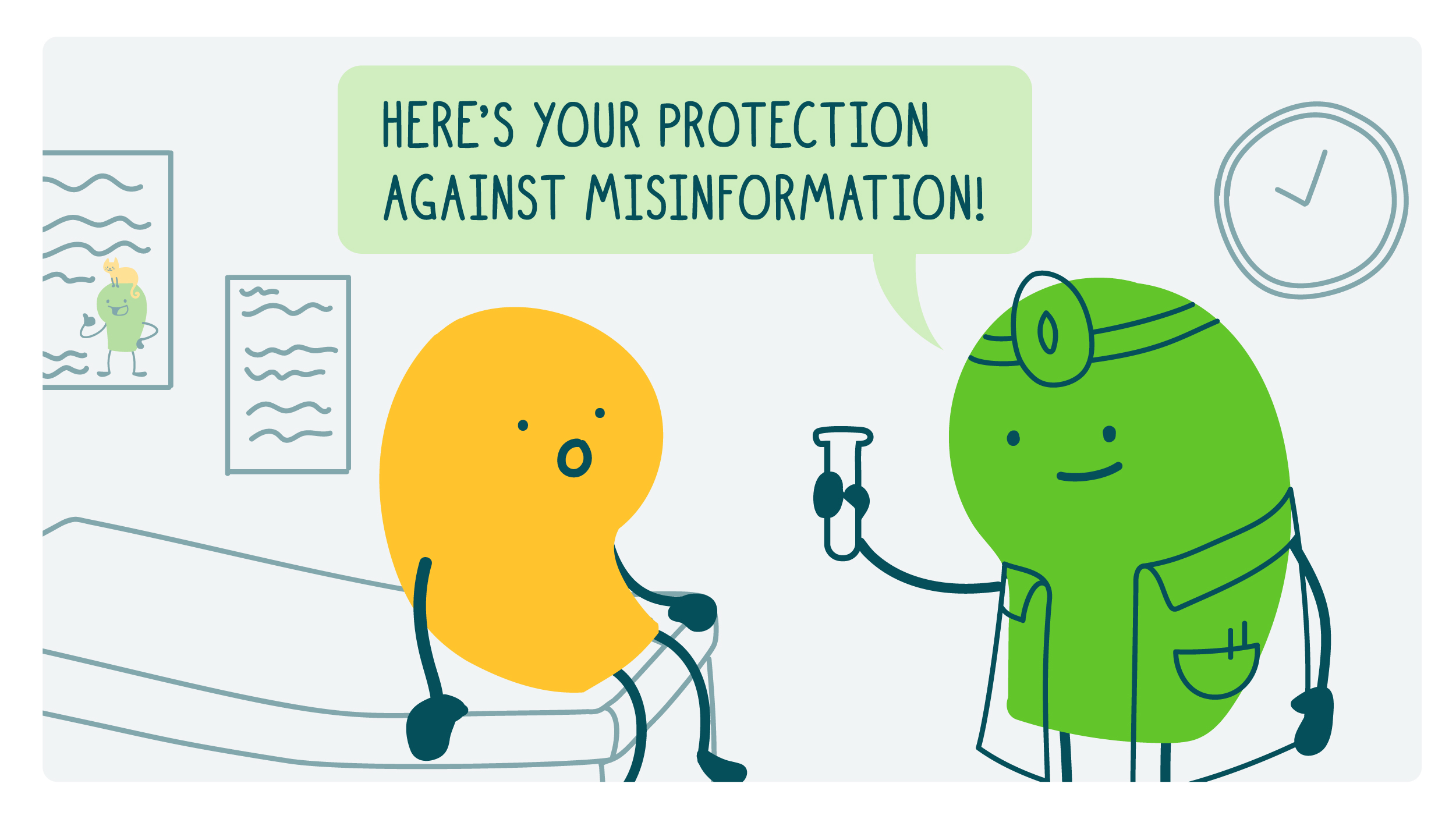
Here at We ❤️ Health Literacy HQ, finding effective ways to fight misinformation is one of our top priorities. It’s why we’re big fans of the trusty truth sandwich. And today we’d like to tell you about another important mythbusting method: prebunking.
Prebunking is based on inoculation theory, a psychological framework that aims to prepare people in advance to resist unwanted persuasion attempts. The idea? Just like giving people a weakened dose of a virus protects them from a disease, giving them a “weakened dose” of misinformation can help them spot misinformation in the future. And when it comes to health info, that can go a long way toward helping people make super important decisions.
Like its cousin debunking, prebunking disproves false claims — but prebunking is likely to have a more widespread impact. That’s because prebunking equips people to think critically about (mis)information rather than automatically accepting it as fact. Effectively debunking false claims, on the other hand, is notoriously hard. Once people accept something as true, explaining that it’s false may just not work.
Okay, back to prebunking. There are 2 main types of prebunks:
- Fact-based: warning people about a specific false claim they might see or hear — and correcting that claim
- Logic-based: explaining the techniques that people who spread false information use to manipulate folks
While both can help us combat misinformation, logic-based prebunks in particular can have far-reaching effects. Let’s play out an example. Say you’re creating materials to warn newly pregnant people about the dangers of crisis pregnancy centers — which masquerade as legitimate health centers but often lie and use shame and fear to keep people from getting abortions.
You might say: “Abortion does not raise your risk for cancer. Clinics that say it does are usually fake health centers that spread false information to prevent abortion. But the truth is that abortion is very safe. So be on the lookout for fake clinics that say otherwise!” (Look familiar? Yep, that’s a prebunk that basically takes the form of a truth sandwich!) This is a fact-based prebunk, and it may make sense to use fact-based prebunks strategically to address particularly widespread or harmful false claims. That said, crisis pregnancy centers spread so much false information that trying to refute each claim would be inefficient — and likely ineffective.
That’s where logic-based prebunks come in. Sticking with our example, this means clearly explaining the tactics these places use to prevent folks from getting abortions. For example, you could say: “Crisis pregnancy centers use fear and shame to try to keep people from getting abortions. So if a clinic gives you information that’s overly scary or makes you feel ashamed for considering an abortion, it’s probably a crisis pregnancy center and not a real health clinic. Clinic staff should give you the facts in a non-judgmental way that doesn’t make you feel bad about yourself or your decision.”
The bottom line: Prebunking is an effective method for fighting misinformation — especially when it helps audiences understand and spot misinformation tactics.
Browse recent posts